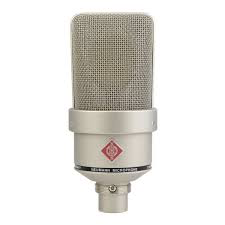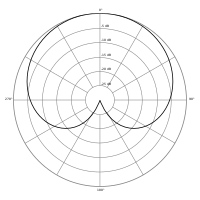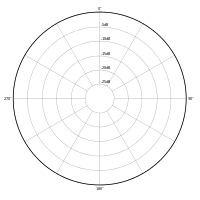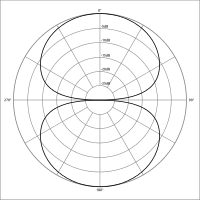What is Music Production? – Part 4 – Microphone Basics
- Janae Jean

- Jun 28, 2019
- 7 min read
Updated: Oct 22, 2020
Meet your new friend, Mike

So far, on our study of "What Is Music Production?" We have discussed the various professionals roles that work together to create a song. We've encountered some popular DAWs. And, we've considered the studio as an instrument. In an earlier post, we also talked about MIDI. Today, we are going to discuss one part of that studio instrument—the microphone.
When you think of the microphone, what image pops into your mind's eye? Is it a vintage mic like the one pictured above? Is it the ubiquitous Shure Beta 58A with its iconic blue ring that rock singers have been singing, screaming, and waling into on stage since the 1960s? Do you just imagine a vague image where you know that the singer is singing into a microphone, but you are not sure what it looks like? Let's talk about three types of microphones, condenser, dynamic, and ribbon—as well as three microphone polar patterns–unidirectional, omnidirectional, and bidirectional.
Definition
By definition, a microphone is a device or instrument for concerting sound waves into electrical signal. It is an example of a transducer, a device that changes information from one form to another. Microphones are used in many common device from landline telephones to 21st century smartphones to personal computers to hearing aids to intercom systems, and more. Microphones are commonly referred to as "mics" or "mikes." (Both spellings are used, though mic is becoming standard.)
There are various designs of microphones on the market today. What they all have in common is the diaphragm. The diaphragm is a thin piece of material (paper, plastic, or aluminum, etc.) which vibrates when it comes in contact with air-pressure changes caused by sound waves. When the diaphragm vibrates, other components in the microphone vibrate as well. The resulting vibrations are converted into an electrical current which becomes the audio signal. Typically, the diaphragm is located in the head of the microphone. Three of the common types of microphones are condenser, dynamic, and ribbon microphones.
History
Did you ever attach a string between two wax paper cups as a child? This is actually the first technological step to the microphone. When Alexander Graham Bell received the US patent for an early telephone in 1876, he replaced the string with a wire that conducted electric direct current. He later went on to devise a version which used a liquid transmitter which he exhibited at the Philadelphia Centennial Exposition in 1876. The liquid microphone did not provide intelligible audio. The first microphone that allowed for usable telephony was the carbon microphone. This was developed by American inventors Emile Berliner and Thomas Alva Edison and British inventor David Edward Hughes simultaneously and independently.After an ensuing legal battle, Edison was awarded the first patent for the carbon microphone in mid-1877. This carbon microphone is a direct ancestor to today's microphones.
Three Type of Microphones
1. Neumann TLM 103, Large-Diaphragm Condenser Microphone. Cardioid
2. Shure Beta 58A, Dynamic Microphone, SuperCardioid
3. RCA Type-77-DX, Ribbon Microphone, Poly-Directional (Select Polar Pattern)
The Condenser Microphone

Condenser is an old-fashioned word for capacitor, which is an electronic component which stores energy in the form of an electrostatic field. Electrostatic relates to stationary electric charges or fields as opposed to electric currents. The condenser microphone uses a capacitor to convert sound (acoustic energy) into electric energy. Thus, in some parts of the world, such as the U.K., they are referred to as "Capacitor Microphones."

Condenser microphones come in large and small diaphragm types. In the large diaphragm type, the diaphragm is an inch or larger and sound is captured from the side. In the small diaphragm type, the diaphragm is less than an inch and sounds is captured from the front. Examples of large diaphragm condenser microphones include the Neumann U87, the Neumann TLM 103, the Røde NT-USB, and the AKG 414. Examples of small diaphragm condenser mics include the Røde M5 Compact ½", the Sennheiser MKH 50, the Shure SM81, and the Neumann 184.
Condenser microphones require external power. (This is unique to them, no other mics require this.) In the past, this could be considered inconvenient, however today most microphone inputs offer phantom power (+48V). This was invented by the German manufacturer Neumann GmhB (pronounced Noy-Men, not New-Men). In USB models (such as the Røde NT-USB) , USB supplies the power from the computer. (In 1961, at Bell Labs in New Jersey James West and Gerhard Sessler invented the electret condenser mic that uses a special type of capacitor that has a permanent charge. This type of microphone is used in Lavalier microphones, telephones, and more).
This boost in power creates a resulting audio signal that is stronger than that from other types of microphones. They tend to be sensitive and pick up a wide range of dynamics and are able to capture delicate nuances. They are especially well-suited for intimate recordings, think of it as similar to the sound of whispering into a baby's ear. They are also great for acoustic piano, acoustic guitar, soft vocals, cymbals, drum overheads, and room mics. However, they are not a good choice for loud input, as they tend to distort due to their sensitivity.
The Dynamic Microphone

The word dynamic has a specific definition in music, referring to the variance in loudness or softness between notes or phrases. Also, sometimes a performance may be described as "dynamic" meaning energetic and engaging.

The dynamic microphone uses a magnet and a coil of metal wire attached to the diaphragm to create a signal. It is sometimes referred to as a moving coil microphone. When the diaphragm vibrates from sound waves, the coil moves back and forth past the magnet. This is the same principle as a loudspeaker but in the opposite direction. Unlike condenser microphones, they do not require phantom power. Examples of dynamic mics include the Shure SM57, the Shure SM58, the Shure 58A Beta, the Electrovoice RE20, and the Sennheiser MD 441U.
Dynamic microphones are preferred for live sound. They are durable and provide high quality sound. They can handle very loud sounds; it is nearly impossible to overload them. Additionally, they are not affected by extreme temperatures or humidity changes making them a great choice for a touring musician.
The Ribbon Microphone

A ribbon microphone or ribbon velocity microphone works similarly to a dynamic microphone, and sometimes they are grouped together. The difference is that it uses a thin foil of aluminum electrically conductive ribbon placed between the poles of a magnet to produce a voltage by electromagnetic induction. The ribbon is electrically connected to the microphone's output, and its vibration generates the electrical signal. Due to its construction, ribbon microphones are very quiet and free from noise or hiss. They do not require phantom power. They may be good for recording vocals, room ambience, and instruments.
Polar Patterns
A microphone's directionality or its polar pattern indicates how sensitive it is to sounds coming from different angles. Three main types of polar pattern are unidirectional, omnidirectional, and bidirectional.
1. Cardioid Polar Pattern (Unidirectional)
2. Omni-Directional (Nondirectional) Polar Pattern
3. Figure-Eight (Bidirectional) Polar Pattern
Unidirection
Uni-directional means in one direction. The mic is only receptive to sounds from one direction. The most common type of uni-directional mics in the cardioid (pictured above). Snce they only pick up sound coming from one direction, this type is well-suited for a loud stage.
Omnidirectional
Omnidirectional or nondirectional means in all (or in no particular) direction. The microphone has equal sensitivity in all directions. Since they can not be angels away from speakers, they risk causing feedback. They are helpful in situations where you need to pick up sound coming from all directions simultaneously, such as an orchestra. For example, you may choose to use it in a concert setting where you need to pick up a soloist and other players or singers around them as well.
Bidirectional
Bidirectional or figure-eight microphones receive sound equally from both the front and back sides. This is the polar pattern for ribbon microphones, as well as many large diaphragm microphones. These are useful when you need to pick up sound coming from in front as well as behind the microphone. For example, you need to mic the voice of a featured lecturer but also need to mic the sound of the voices of audience the on back side of the mic.
Other Polar Patterns
Some microphones are adjustable and the polar pattern can be changed with a switch for different purposes. Other polar patterns besides these three exist, they are combinations of these patterns, such as supercaridoid, which is a blend of the cardioid and figure-eight patterns. Other patterns include hypercardioid, supercardioid, and subcardioid. The Shotgun pattern is another unidirectional pattern with a very narrow range.
Final Thoughts
There are many excellent microphones on the market today in a wide array of prices ranges. Several questions to ask yourself before purchasing a mic for yourself would include: Will I be performing on stage with this mic? Will I be recording with this mic? What is my budget? What am I going to be recording? Where am I going to be recording? What other instruments or other sounds do I want to record? Will I be traveling? There is a lot more to explore with microphones. We will certainly return to them
Resources
100 Years of the Condenser Microphone. http://mmrmagazine.com/issue/100-years-of-the-condenser-microphone/ (Accessed 26 June 2019).
Eargle, John. The Microphone Book. Burlington, MA: Focal Press. 2004.
Microphones. http://artsites.ucsc.edu/EMS/Music/tech_background/TE-20/teces_20.html (Accessed 26 June 2019).
Microphone Data. http://microphone-data.com (Accessed 26 June 2019).
Microphone Primer: Types and Operation. https://www.shure.com/en-US/support/find-an-answer/primer-on-microphone-types-and-operation (Accessed 27 June 2019).
Neumann. https://www.neumann.com (Accessed 26 June 2019).
Shure. https://www.shure.com (Accessed 26 June 2019).

Janae J. Almen is a professional music instructor, composer, songwriter, sound healer, and writer. She has a BA in Music/Education from Judson University and a MM in Computer Music/Composition from the Peabody Institute of the Johns Hopkins University. Visit www.PerennialMusicAndArts.com for more about music lessons and www.JanaeJean.com for more about a variety of wellness related topics including tea, sound healing, and recipes. Contact her via janaejean@me.com for questions about tea, ceremony, music composition, sound healing, writing, photography, or other relevant topics.














Comments